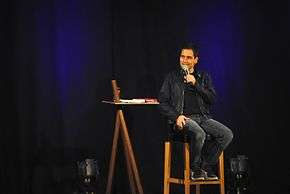Ratingen-Lintorf
| Lintorf | ||
|---|---|---|
| Quarter of Ratingen | ||
|
Helpenstein mill, built before 1157 | ||
| ||
 Lintorf | ||
| Coordinates: 51°19′58″N 06°49′51″E / 51.33278°N 6.83083°ECoordinates: 51°19′58″N 06°49′51″E / 51.33278°N 6.83083°E | ||
| Country | Germany | |
| State | North Rhine-Westphalia | |
| Admin. region | Düsseldorf | |
| District | Mettmann | |
| Town | Ratingen | |
| Founded | 1052 | |
| Government | ||
| • Mayor of Ratingen | Klaus Konrad Pesch (shared candidate of CDU/FDP/The Greens/SPD) | |
| • Governing parties | CDU / Bürger Union Ratingen / SPD | |
| Area | ||
| • Quarter of Ratingen | 16.85 km2 (6.51 sq mi) | |
| Population (2014) | ||
| • Metro | 15,162 | |
| Time zone | CET/CEST (UTC+1/+2) | |
| Postal codes | 40885 | |
| Dialling codes | 02102 | |
| Vehicle registration | ME | |
| Website | http://www.lintorf.de/ | |
Lintorf is a village at the transition of the Berg region into the lower Rhine plain in North Rhine-Westphalia, Germany. Since 1975 it has been a quarter of the city of Ratingen.
History, Geography, Transport
Lintorf was suburbanised in 1975. Ratingen belongs to the Mettmann district in the Düsseldorf region (North Rhine-Westphalia state). Before then, Lintorf was an independent municipality and seat of administration of Amt Angermund (since early 14th century; 1929-1950 "Amt Ratingen-Land"; 1950-1974 "Amt Angerland").
Lintorf is on the Cologne-Ratingen-Duisburg line, but since 1985 has had no train stations. The place is connected by autobahns A52 (Essen—Düsseldorf, exit Ratingen Tiefenbroich), A524 (autobahn interchange Breitscheid—Krefeld, exit Ratingen-Lintorf), A3 (Oberhausen—Cologne, exit A52). The old boundary lies in the northern edge of the approach lane of the Düsseldorf International Airport (3 km runway).
Lintorf was the site of a displaced persons camp after World War II, providing a home for Ukrainians, Poles and Yugoslavs awaiting immigration. Ratingen has been the site of a war crime in April 1945. The bodies of eight German anti-Nazis, one woman and two Polish men were found lying in woods near the town.
In the first half of the 20th century, lead, clay and gravel was mined. In the period after World War II, the auto manufacturer Hoffmann (licensed production of the Vespa scooter), the company Constructa (washing machines), as well as the company Hünnebeck (metal scaffold construction).
A rural scattered housing estate developed in the time after World War II from suburban residents of the surrounding cities, primarily from Düsseldorf (12 km). The surrounding forests are a popular scenic area.
Since 19th century, population has grown from 872 (1816) to 15,162 (2014).[1]
Gallery
- Catholic church St. Anna
 Ulenbroich 1-3
Ulenbroich 1-3 Haus Merks
Haus Merks Helpenstein mill, est. 1157
Helpenstein mill, est. 1157 Krummenweger Str. 223
Krummenweger Str. 223 Lintorfer Markt 24
Lintorfer Markt 24- Protestant church
 Lintorfer Markt 20
Lintorfer Markt 20 Helpenstein mill
Helpenstein mill Beekerhof
Beekerhof Gut Porz
Gut Porz Helpenstein mill
Helpenstein mill Helpenstein mill and Dickelsbach
Helpenstein mill and Dickelsbach
("little dyke" brook) Hoffmann factory
Hoffmann factory Catholic church Saint Anna
Catholic church Saint Anna
Notable People

- Johann Peter Melchior (1747–1825), sculptor and porcelain artist
- Jakob Oswald Hoffmann (1896–1972), entrepreneur (Hoffmann-Werke Lintorf)
- Kurt Krüger (1920–2003), footballer
- Bastian Fleermann, historian
- Dieter Nuhr (born 1960), comedian, kabarettist (German cabaret, mostly political satire) and author
External links
- "www.Lintorf.de". www.Lintorf.de. Retrieved 2013-05-07. (in German)
- "Ein Webportal für Lintorf". Lintorfer.info. Retrieved 2013-05-07. with photos of Lintorf (in German)
- "Lintorf Online - Verein Lintorfer Heimatfreunde e.V". Lintorf-die-quecke.de. 2003-02-03. Retrieved 2013-05-07. of the Lintorfer of association for local history (in German)
- "Stadt Ratingen". Ratingen.de. Retrieved 2013-05-07.
- http://www.ratingenweb.de
- "DP Camps in Germany, Camps La-Li". Dpcamps.org. Retrieved 2013-05-07.
- "Atrocity. Ratingen. Germany [13-May-1945]. D: ? [US, 1945]". Cine-holocaust.de. 1945-05-13. Retrieved 2013-05-07.
